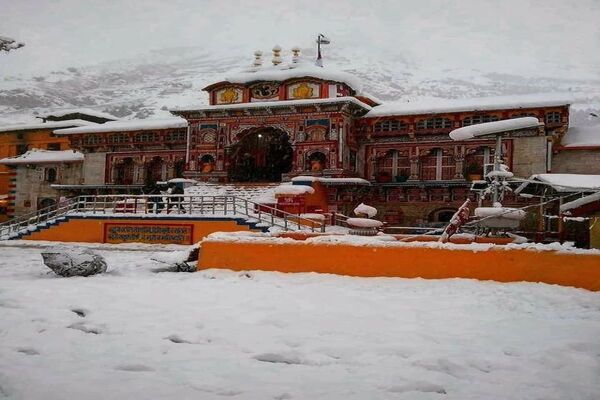Badrinath Temple is a sacred Hindu sanctum devoted to Lord Vishnu, one of the top divinities in Hinduism. It’s located in the Chamoli quarter of Uttarakhand in northern India and is considered to be one of the holiest Hindu sanctuaries. Badrinath is also a part of the Chardham Yatra, which includes three other religious Hindu places: Kedarnath, Gangotri, and Yamunotri.
Badrinath Temple Mythology
According to Badrinath Temple mythology, Lord Vishnu in the form of Berry had meditated in this area thousands of times, this place is known as Badri- Vishal. It’s said that the gods and demons formerly approached Lord Vishnu to help them churn the abysses in the hunt of the Catholicon of eternity. Lord Vishnu agreed to help but claimed that he had only drunk the first drop that surfaced from the ocean. The first drop was the curse, and Lord Vishnu drank it to save the world from destruction. To save himself from the goods of the bane, Lord Vishnu retreated to the mountains near Badrinath, where he meditated and performed severe austerities.
Another popular legend associated with Badrinath is that Lord Vishnu chose the place as his residence and appeared in the form of Lord Badrinath to bless his addicts. It’s also said that Lord Vishnu’s consort, Goddess Lakshmi, appeared in the form of a berry (Badri) tree to cover her husband from the harsh mountain rainfall. That’s why this place came to be known as Badrinath Mandir.
Badrinath Dham History
The Badrinath Temple History is That It have been placed by Adi Shankaracharya, one of the most prominent Hindu saints and proponents, in the 8th-century announcement. Over the centuries, the Tabernacle has experienced several emendations and expansions, and it has been an important center of passage for Hindus for numerous generations.
The tabernacle is open for callers from April to November when the harsh mountain rainfall makes it possible to pierce the area. The rest of the time, the hero of Lord Vishnu is kept near Joshimath, where it’s worshipped until the coming season.
The Badrinath tabernacle and its girding area hold great spiritual and artistic significance for Hindus, and thousands of pilgrims visit the tabernacle every time to offer their prayers and seek blessings.
The Story of Lord Shiva and Badrinath
Badrinath Dham is primarily considered a holy place dedicated to Lord Vishnu, one of the top deities in Hinduism. Lord Shiva holds a very important place in the religious beliefs associated with Badrinath Temple.
Lord Shiva and Lord Vishnu regarded each other as Aaradhyay, and Lord Shiva went to Badrinath with Lord Vishnu. Some Mythology also states that Lord Shiva went to Badrinath Dham for worship and penance of Lord Vishnu.
It is also believed that Lord Shiva is present in the form of a natural hot spring, which is known as Tapta Kund, near the Badrinath Temple. Pilgrims who visit Badrinath take a holy dip in this hot spring as part of their religious belief, it is considered pure and holy.
Hence, although Badrinath is primarily a sanctum devoted to Lord Vishnu, Lord Shiva also holds an important place in the religious beliefs and rituals associated with the sanctum, and the presence and blessings of Lord Shiva are considered an integral part of the pilgrimage to Badrinath.

